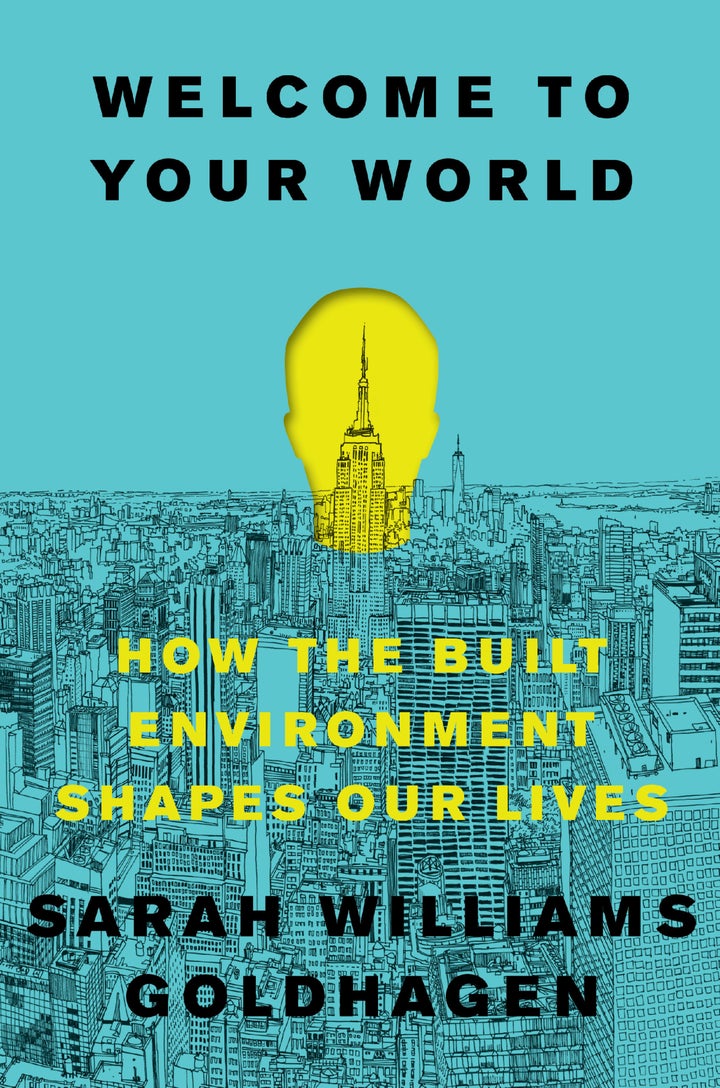
Rarely does a book come along where its very premise is to stop you in your tracks, compel you to look around, take account of where you are standing, why you are there, and how taking another step in one direction or another may make you feel.
Sarah Williams Goldhagen’s, Welcome to Your World: How the Built Environment Shapes Our Lives, is one of those “stop and smell the roses” experiences, except that Goldhagen is asking readers to do more than simply take stock of their lives—she wants them, and government officials, architects and urban planners, to undertake a radical transformation of our actual housing stock—the built environment of her title—because it is so essential to human life, and so dismally misunderstood.
An engaging and lively tour guide of global architecture—some irredeemably failed, others ennobling and sublime—Goldhagen, a longtime architecture critic, author and former Harvard professor, has constructed “Welcome to Your World” as both a paean to the design community and a manifesto for a fuller appreciation of what thoughtful design can accomplish.
She is the town crier on behalf of cities and urban areas screaming for more enlightened design, where soul-deadened residents are forever trapped in aesthetically impoverished places.
Goldhagen sees eyesores everyone—often well-intentioned and overspent construction that leaves residents and passersby enervated and uninspired. How a building is designed and landscaped has a great effect on how its users will ultimately feel—their actions, emotions and overall experience. Merely having a roof over a human being’s head has very little to do with the cognitive experience that is taking place inside that head, and the sensory experience that links body with mind.
Relying on the latest scientific research in neuroscience and neuropsychology, Goldhagen makes a convincing case that urban architecture, landscaping and infrastructure—for both the wealthy and poor—must become a priority in public policy because of its direct bearing on public health. Greenery and natural daylight, convenient public transportation, pleasing walkways, curved interiors and furnishings and fixtures comprised of natural materials, all improve cognitive faculties and functioning.
The full sweep of our sensory and spatial experiences are embedded within the landscapes and cityscapes we occupy, but give very little thought to.
Along the way we visit the Salk Institute for Biological Studies in La Jolla, California, the Vertical Forest in Milan, Italy, the High Line in New York City, Cloud Gate sculpture in Chicago, Illinois, and the Scottish Parliament in Edinburgh, Scotland. Even the Parthenon in Greece and Old City in Jerusalem make cameo appearances to demonstrate how ancient builders apparently knew more about the human spatial experience than graduates of modern day architecture schools. With each turn and attention to detail, Goldhagen conveys how our cognitive processes and sensory stimuli respond to the design features that surround us.
“Welcome to Your World” is, indeed, a greeting, and an invitation, but more urgently, it asks a mystifying question: How did we live so long without this knowledge? We have been walking around blinded to our built environment and blithely unaware of the profound and sometimes debilitating effect it was having. And the problem will only get worse. By 2050, a world population explosion will result in two out of three people living in urban areas. Until all that concrete gets poured, it’s not too late to include the building blocks offered in this book.
Read “Welcome to Your World” and you will never go anywhere again without being more mindful of how consciously and unconsciously you are influenced, uplifted and degraded by the design decisions of others.
What Jane Jacobs once did for the neighborhood stoop, Goldhagen has now done for the global metropolis—informing its urban dwellers how much their mood, productivity and welfare depends on the shape and color of its buildings and byways, and how movements around their built environment are neither random nor without consequence.
